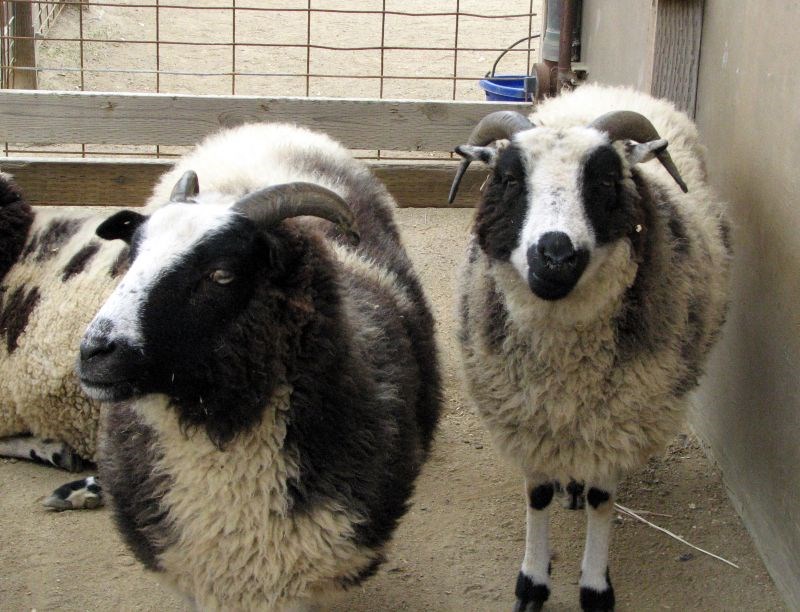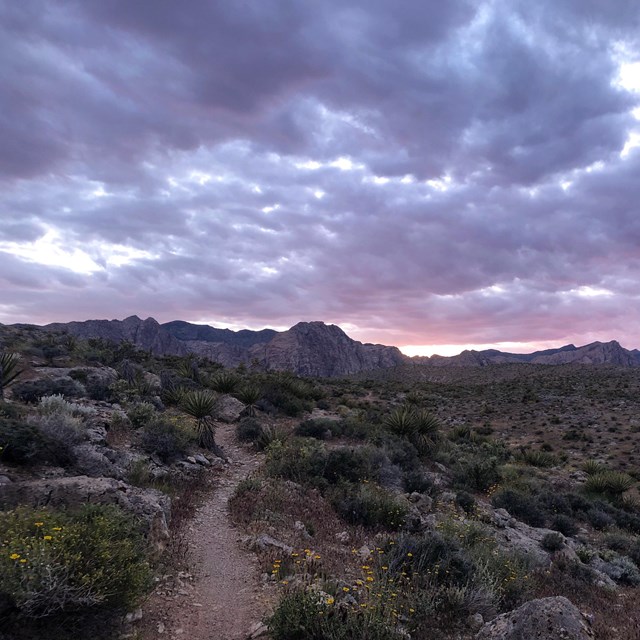Last updated: December 1, 2021
Article
New Mexico Fiber Arts Traditions
- Duration:
- 38.071 seconds
Enjoy the sights and sounds of a traditional New Mexico fiber art, weaving! Watch and listen as people work the loom and check out some examples of finished fiber art in this short clip.

Photo/Wikimedia Commons
Northern New Mexico has a rich history of fiber arts that is preserved by weavers and other artisans who continue to practice the generations-old traditions. Working with fibers has been central in the development of civilizations, with the vital production of clothing and blankets for protection and warmth, and baskets for carrying food. Influenced by what animals and plants are available, for centuries fibers have been knotted and braided, threaded, looped, and twisted to form utilitarian objects such as baskets and cordage, and then dyed with available natural materials. These objects are also unique cultural expressions, often exhibiting patterns and designs influenced by surrounding landscapes and local traditions.
By the 13th Century, Native people grew cotton in what is today New Mexico and wove the fibers into textiles on vertical looms, akin to the free-standing upright looms still used by the Diné (Navajo). In 1598 Juan de Oñate introduced a new fiber to the region when he brought sheep, among other livestock, to the present-day southwestern United States along El Camino Real de Tierra Adentro. These hearty sheep, known as churra, meaning common, provided meat and milk, as well as wool. By the 1700s, churra sheep numbered in the hundreds of thousands across ranches and villages in the upper Rio Grande Valley. The Diné also adopted the churra sheep and incorporated the wool into their renowned weaving traditions. Churra sheep produced beautiful, warm, colorful fibers that provided the foundation of Native, Spanish, and Mexican textiles for the next 300 years.

Photo/NPS
The production of woolen textiles became an important industry in New Mexico as traders brought the goods from New Mexico to Alta California on the Old Spanish Trail and exchanged them for mules and horses. Among the most popular woolen trade items were Rio Grande blankets, serapes, and rugs, all woven on horizontal floor looms introduced by the Spanish. Additionally, the sheep themselves were likely traded west to California along the Old Spanish Trail.
The arrival of the railroad in 1880 to northern New Mexico brought an influx of new trade goods, including commercially produced blankets, yarns, and synthetic dyes, making the local labor-intensive weaving industry less imperative. Nonetheless, each spring shepherds shore wool from sheep, wool was spun into yarn, and weavers continued to weave, answering a continued demand for the aesthetic, particularly with the growth of curio shops over the next several decades.

Photo/Wikimedia Commons
Dibé bé iiná is a Diné saying meaning “sheep is life.” While there have been numerous changes to the gathering of materials, fabrication, and dissemination of goods since the days of the textile trade on the Old Spanish Trail, Diné and shepherds along the Rio Grande still breed and raise descendants of the original churra, known as Navajo-Churro sheep. Likewise, today in northern New Mexico and beyond, 6th and 7th generation weavers carry on the long tradition, weaving the Saltillo, Vallero, Chimayo, and Rio Grande styles.

Photo/Cleveland Museum of Art (Accession Number: 1921.558)
A resurgence of interest over the past several decades in weaving, natural dyeing, hand-spinning, and other crafts supported by cooperatives, individuals, and museums has contributed to keeping the tradition of textile arts alive.

Photo/The Nelson-Atkins Museum of Art (object number: 33-1430)
Sources and Additional Information:
- “A Brief History of Rio Grande Weaving.” Unfolding Tradition: Centinela Traditional Arts/Chimayo Weavers, May 04, 2014.
- “An Introduction to Navajo-Churro Sheep.” Dot Ranch, May 05, 2020.
- “History.” Espanola Valley Fiber Arts Center, The New Mexico Fiber Arts Center. Accessed October 28, 2021.
- “Generations in the Making: The Fiber Arts of New Mexico.” New Mexico True. New Mexico Tourism Department, March 28, 2018.
- “Know Your Fiber: Churro Wool.” Northwest Yards, February 01, 2018.
- “More than Four Hundred Years Ago…” Navajo-Churro Sheep Association. Accessed October 28, 2021.
- “Wool and Weaving.” Navajo Sheep Project. Accessed November 4, 2021.
- “New Mexico Historical Textile Resources: A Historic Overview.” The New Mexico Fiber Arts Directory. Accessed October 28, 2021.
- Old Spanish National Historic Trail Comprehensive Administrative Strategy. National Park Service, US Department of the Interior. December 2017.
- “Rio Grande.” Chimayo Weavers. Accessed October 28, 2021.
- “The Colorful History of Fiber Arts in New Mexico.” New Mexico True. New Mexico Tourism Department, March 29, 2018.
- “The Sheep.” Tierra Wools. Accessed October 28, 2021.


